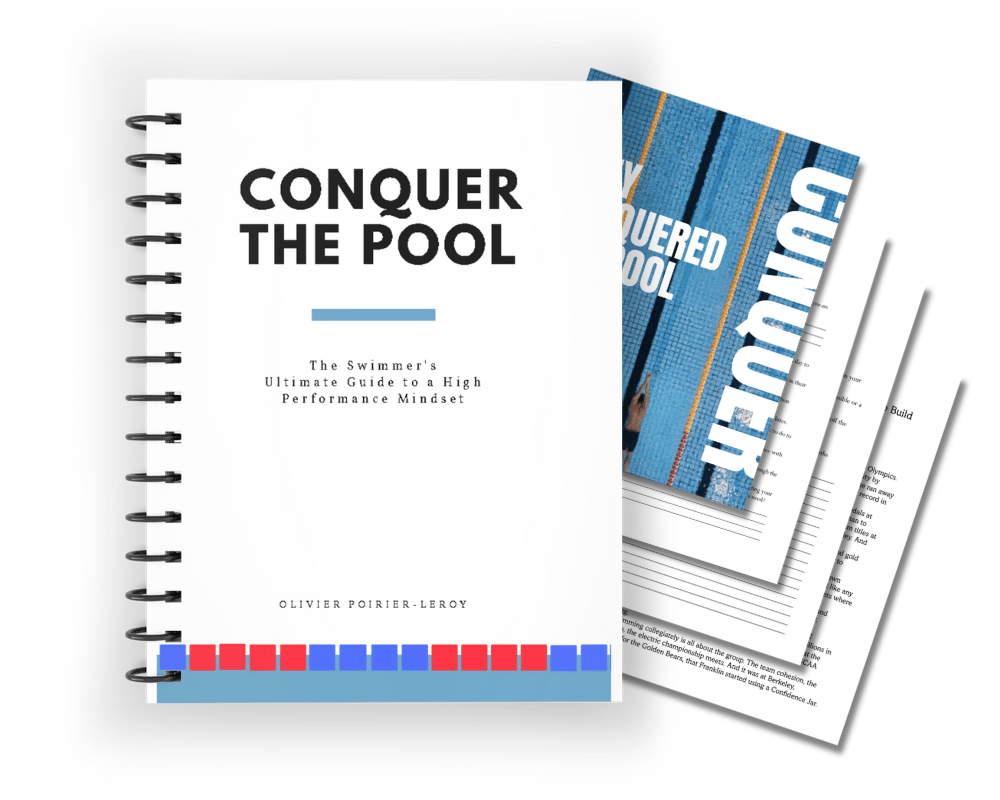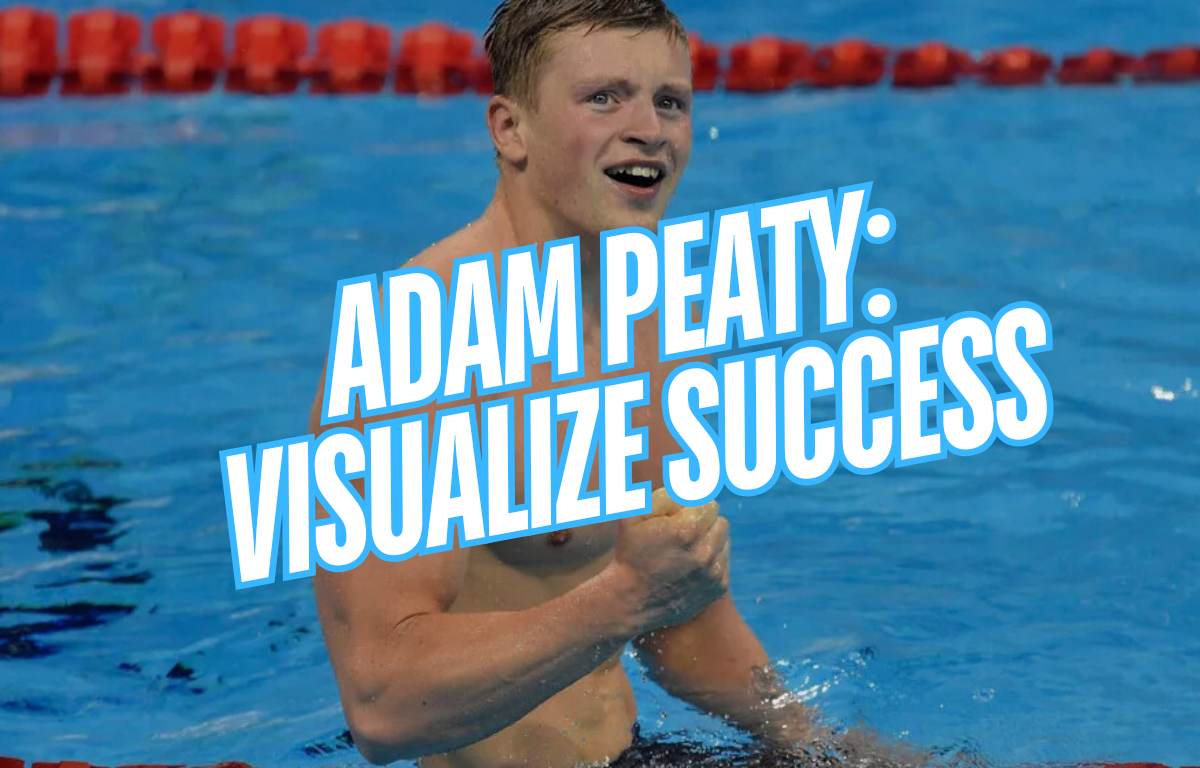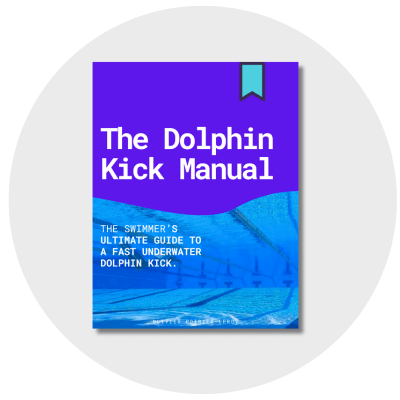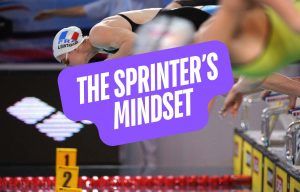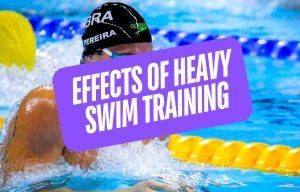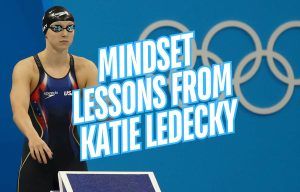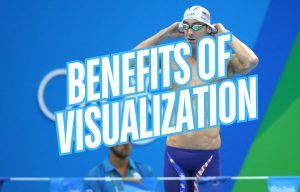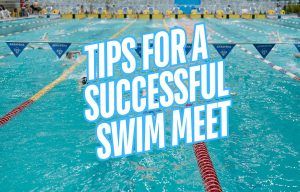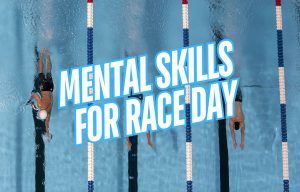Visualization is a tool to help swimmers perform under pressure. Here’s how the greatest breaststroker of all-time used it to swim to gold.
Elite swimmers put in the work over years and years of training. Early mornings, eating clean, going to bed when it’s still light out, and weeks on weeks away from home at training camps, swim meets, and more swim meets.
Beyond the physical training that swimmers do, there is also the mental aspect.
Adam Peaty, better-than-average breaststroker, has long been a big fan of visualization, one of the most effective mental skills for competitive swimmers.
Visualization has a lot of benefits for swimmers, including increasing confidence, managing pre-race nerves, improving attentional control, and more.
Visualization allowed Peaty to prepare for his golden Olympic moments months in advance by rehearsing the stress of the moment and giving him bulletproof confidence.
Ultimately, it led to a lot of gold, a lot of world records, and a lot of fast, high-pressure moments.
Here’s how you can use the same visualization strategies to perform your best when it matters most.
Start the process early
“For the 10 months before I even landed in Rio for the Olympics, I rehearsed walking out into the arena by collecting the audio from the previous year’s World Championships in Kazan, Russia.”
Unfortunately, most swimmers view mental skills as a last-minute silver bullet or something to paper over insufficient and inconsistent training. Like all mental skills, visualization should be introduced to your training regimen weeks or months before the Big Meet.
Building familiarity with the skill, giving it a chance to grow and improve, and stacking the reps takes time, just like any skill in the water.
The earlier you start rehearsing those race day performance, the more prepared you will be.
Peaty mentally rehearsed walking out onto the pool deck for ten months before the Olympic. Instead of leaving it to chance, or waiting until the last moment, he was very methodical and had a long-term outlook with his mental approach.
“It’s weird because I didn’t really get that nervous during the Olympics. I’d swam that race a thousand times in my head.”
This way, nothing about the Olympic environment felt new or overwhelming.
Add sensory elements to make it more real
“If you start feeling your environment and seeing it at the same time — what will the water feel like? Who’s going to be beside me? What’s it going to be like when you touch the wall? —you can prepare yourself for every situation and that’s something that really helps me.”
Visualization is at its best when it feels real. [studies demonstrating this…]
Peaty recorded the audio from the 2015 FINA World Championships and played it while visualizing success for Rio.
One way to boost realism is by adding smell (visualize when you are at the pool and the smell of chlorine is in the air) or sounds (in the case of Peaty, using the sound from the previous year’s World Championships).
The more “real” you make the visualizations, the more your brain believes the experience, triggering the same adrenaline, nerves, sweaty palms, and excitement of the real thing.
Visualize the race lead-up
Visualizing your race is a great start. But this isn’t where most swimmers crater mentally. It is in the quiet moments leading up to the race where things take a mental detour.
Excess tension, choking, and distraction happens before we step up onto the block.
Peaty’s visualizations would incorporate the lane and swimmer announcements before his race. The announcer listed the swimmers from the outside in, “and then finally, lane four, Adam Peaty.”
The mental rehearsals were designed to give him a big sense of “been here, done this” when he got behind the block.
Which is exactly what happened—walking out, hearing his name, feeling the crowd, all familiar. By the time the final in Rio came around, it was just another rep.
Don’t overcomplicate it
“We must not underestimate that sometimes, simplicity is best.”
Swimmers, like all athletes, can left-turn into oncoming overthinking. With mental skills, simplicity is best, whether we are talking goal setting, self-talk, performance cues, or breathing exercises. Let’s not overcomplicate visualization, either.
You don’t need to create complex of multi-layered mental movies. Simple and repeatable visualization is often more effective because it eliminates overthinking and mental clutter.
For the swimmer new to visualization or who has struggled to make it work in the past: Focus on the high impact parts of your race—not necessarily every stroke or breath (especially you distance swimmers). Keep it simple and laser-targeted on the parts of your race that matter most.
- Visualize the chaos of the meet warm-up—and getting prepared despite the mayhem.
- Visualize (and feel) the nerves in the minutes leading up to race time—to accustom you to the rush of pressure and anxiety as the big moment comes.
- Visualize yourself sticking to your race strategy and swimming your best race—no matter what’s happening in the lane next to you.
By focusing your mental reps on the big moments that matter on race day, you increase the quality of your visualization. Hardwire confidence for the things that matter most to race-day success.
Use visualization to handle the nerves
“Eventually, by the time I even got to the Olympics, I was already well-prepared for something that I feared and also felt a huge amount of pressure from.”
The main reason swimmers use visualization is to get a handle on pre-race nerves. To help us manage and channel the excitement/anxiety of competition so that we can swim fast.
Visualization gives us a chance to rehearse the physical symptoms and experience that comes with pre-race nerves—and to thrive in the face of them.
Pressure comes for us all in varying degrees and from different angles. But visualization helps us to manage that surge of energy so that we can stay dialed in on executing a killer race.
We all want and dream and fantasize about our perfect race day performance. That’s not visualization. It’s wishful thinking. Visualization places you in that high-stress, high-pressure moment—the bright lights, crowd noise, and expectations, both internal and external.
Use visualization to prepare you for the intensity of the nerves so that you can ride them to success instead of getting derailed under pressure.
The Bottom Line
Dealing with pressure is tough for every swimmer. The experience of churning belly butterflies is universal, whether you are an Olympic favorite or an age grouper chasing down a state cut.
Yes, for most swimmers there are fewer eyeballs and a much smaller television audience watching, but that doesn’t make the race any less important to us.
Pressure comes for us all, and visualization is one of the best tools at our disposal to acclimatize to the sometimes overwhelming feelings of nerves when it’s time to race.
Michael Phelps used visualization consistently throughout his career. So have countless other Olympic champions.
Here is Adam Peaty with the final word:
“If you can visualize it, you can do it.”
Happy swimming!
The Next Step
Visualization is one of the best mental skills at the enterprising swimmer’s disposal.
But most swimmers don’t do it properly.
My book, Conquer the Pool: The Swimmer’s Ultimate Guide to a High-Performance Mindset, walks you through how to use visualization like a pro.
Step by step.
With sample visualization cues, plans, and worksheets to get you started.
Made with the feedback of 200+ Olympic, World, and NCAA winning swimmers and coaches, the book is packed with step-by-step strategies and advice for helping you unlock your mind so that the body can swim to its potential.
Whether you are stuck in a plateau, ready to take things to the next level, or preparing for the Big Meet, Conquer the Pool gives you the mental edge to swim with confidence.
